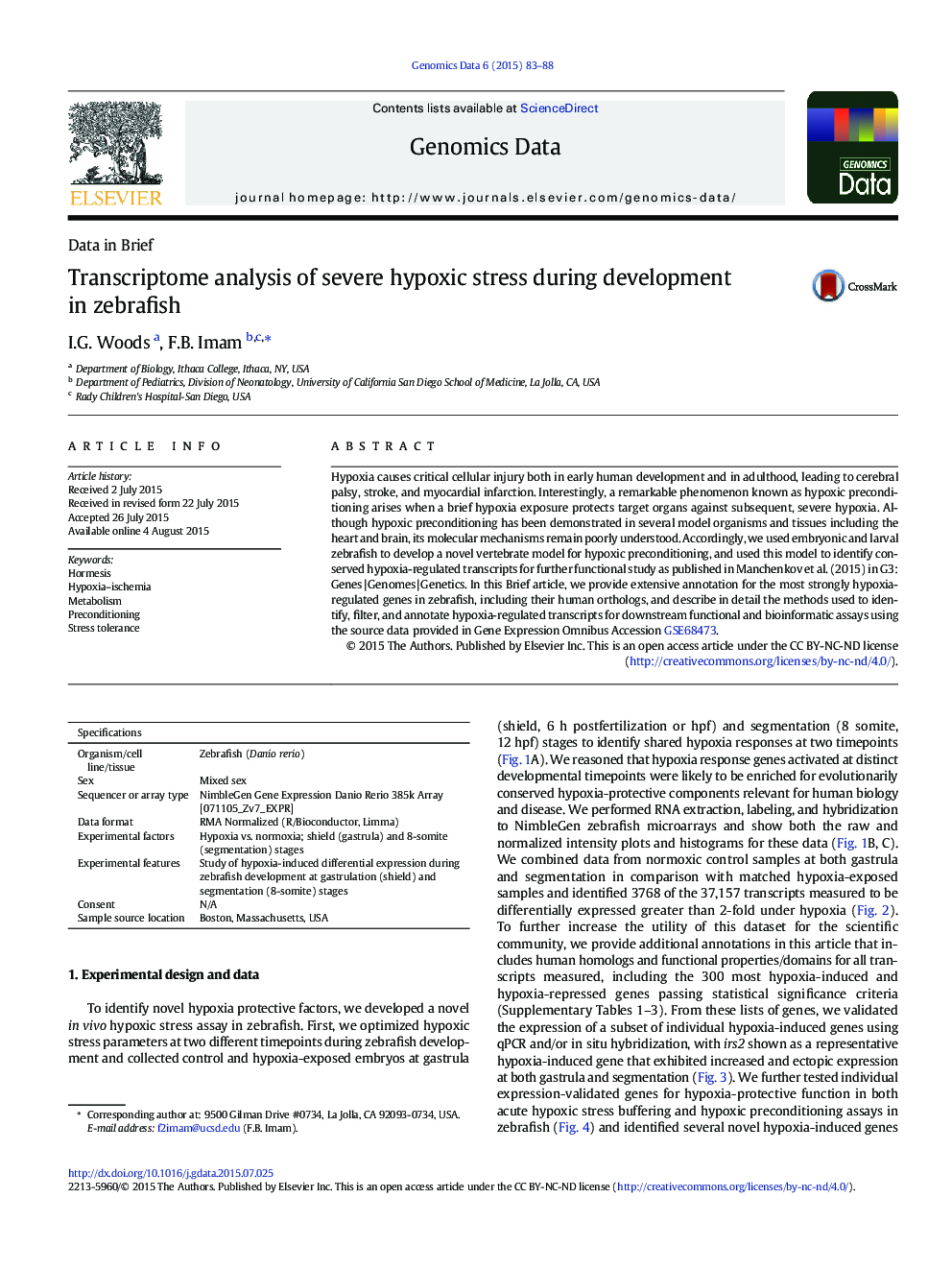| Article ID | Journal | Published Year | Pages | File Type |
|---|---|---|---|---|
| 2822021 | Genomics Data | 2015 | 6 Pages |
Hypoxia causes critical cellular injury both in early human development and in adulthood, leading to cerebral palsy, stroke, and myocardial infarction. Interestingly, a remarkable phenomenon known as hypoxic preconditioning arises when a brief hypoxia exposure protects target organs against subsequent, severe hypoxia. Although hypoxic preconditioning has been demonstrated in several model organisms and tissues including the heart and brain, its molecular mechanisms remain poorly understood. Accordingly, we used embryonic and larval zebrafish to develop a novel vertebrate model for hypoxic preconditioning, and used this model to identify conserved hypoxia-regulated transcripts for further functional study as published in Manchenkov et al. (2015) in G3: Genes | Genomes | Genetics. In this Brief article, we provide extensive annotation for the most strongly hypoxia-regulated genes in zebrafish, including their human orthologs, and describe in detail the methods used to identify, filter, and annotate hypoxia-regulated transcripts for downstream functional and bioinformatic assays using the source data provided in Gene Expression Omnibus Accession GSE68473.
